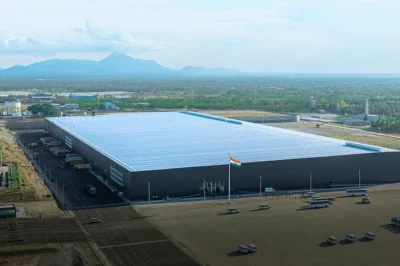
Strategic Shift in Hyundai’s Investment Portfolio
In a significant move, Hyundai Motor Company has fully divested its 2.47% stake in Ola Electric Mobility, generating ₹552 crore through an open market transaction. This decision marks Hyundai’s complete exit from its investment in the Indian electric vehicle (EV) start up, signalling a strategic shift in its investment portfolio. Alongside Hyundai, Kia Corporation, another South Korean automaker, also reduced its holding by 0.6%, collectively raising ₹137 crore. These transactions were reported in the data released by the National Stock Exchange (NSE).
Background of the Investment
Hyundai and Kia had jointly invested $300 million in Ola Electric in 2019 to collaborate on electric vehicle development and infrastructure. The initial partnership aimed to leverage Ola Electric’s innovative approach to EV manufacturing and Hyundai’s global expertise in the automotive sector. However, recent developments indicate a divergence in their strategic directions, leading to the divestment of their stakes in the company.
Market Reaction and Stock Performance
The announcement of Hyundai and Kia’s exit had an immediate impact on Ola Electric’s stock performance. The shares were sold at a discount, Hyundai at ₹50.70 and Kia at ₹50.55, leading to an 8% decline in Ola Electric’s stock price. This drop reflects investor concerns over the changing dynamics in the company’s shareholder structure and the potential implications for its future growth prospects.
Ola Electric’s Current Challenges
Ola Electric, once a frontrunner in India’s EV market, is currently facing several challenges. Since going public in August 2024, the company has experienced a 46% drop in its stock value. Recently, Ola Electric reported increased losses in the fourth quarter and projected a revenue decline for the current fiscal’s first quarter, largely due to aggressive discounting in a competitive market. These financial strains have raised questions about the company’s ability to sustain its growth trajectory amid mounting pressures.
Citigroup’s Strategic Investment
Amidst these challenges, Citigroup has emerged as a significant investor in Ola Electric. On June 3, 2025, Citigroup acquired over 8.61 crore shares of Ola Electric Mobility through a block deal valued at ₹435 crore. This move indicates continued investment interest in the Indian electric vehicle sector and suggests confidence in Ola Electric’s long-term growth potential.
Hyundai’s Focus on Domestic EV Expansion
While Hyundai has exited its investment in Ola Electric, the company remains committed to expanding its presence in the Indian electric vehicle market. Hyundai Motor India Ltd (HMIL) plans to invest ₹32,000 crore over the next ten years to boost production capacity and fund new product development, including electric vehicles. This substantial investment will support the launch of new models, such as the electric version of its popular SUV Creta, and aims to meet both domestic and international demand.
Implications for the Indian EV Market
Hyundai’s exit from Ola Electric and its subsequent investment in domestic EV production underscore the evolving landscape of the Indian electric vehicle market. The company’s strategic shift reflects a broader trend where global automakers are reassessing their partnerships and investments in the Indian EV sector. As competition intensifies and market dynamics change, companies are focusing on strengthening their domestic operations to capitalize on the growing demand for electric vehicles in India.
Conclusion
Hyundai Motor Company’s decision to exit its investment in Ola Electric and its continued focus on expanding its domestic EV production highlight the dynamic nature of the electric vehicle industry in India. While Ola Electric faces challenges in maintaining its market position, the influx of investment from entities like Citigroup suggests that opportunities still exist for growth and innovation in the sector. As the market evolves, stakeholders will need to adapt to changing dynamics to succeed in the competitive landscape of India’s electric vehicle market.









































Leave a Reply